How to Fix Water Ponding On Concrete?
Do you have puddles on your concrete slab? No worries, we will tell you how to fix that!
If you have already noticed water puddles on your concrete patio or another concrete surface, you might ask yourself where they come from and how to fix them. Anyway, having pooling water on a driveway or a patio doesn’t look attractive!
Plus, everyone knows that standing water, if not removed in time, will lead to sometimes serious damage sooner or later.
Luckily, it is quite easy to learn how to fix standing water on a concrete slab.
In this article, we will tell you how this should be done, and also, you are going to find out why water can accumulate on concretesurfaces at all. In addition, you are going to get a few useful tips and life hacks on preventing this issue.
How to Get Rid Of Standing Water On Concrete?
If you have water ponding on concrete, this is not good. It does not matter HOW that water got there, what does matter is how to remove it from a concrete surface as soon as possible before it starts damaging the material.
You definitely know that concrete is considered a durable and strong material.
This is why many homeowners choose it for their driveways, patios, and other stuff. However, even concrete will not last forever if puddles of water are constantly developing on it!

So how to fix puddles on concrete, you may wonder? In fact, it is quite an easy thing to do. You will just have to undergo several steps that we have described for you below.
Make sure that you don’t skip any of them (except for those that you might not need at all due to the specifics of your puddling case), and be sure that the issue of standing water will never bother you again.
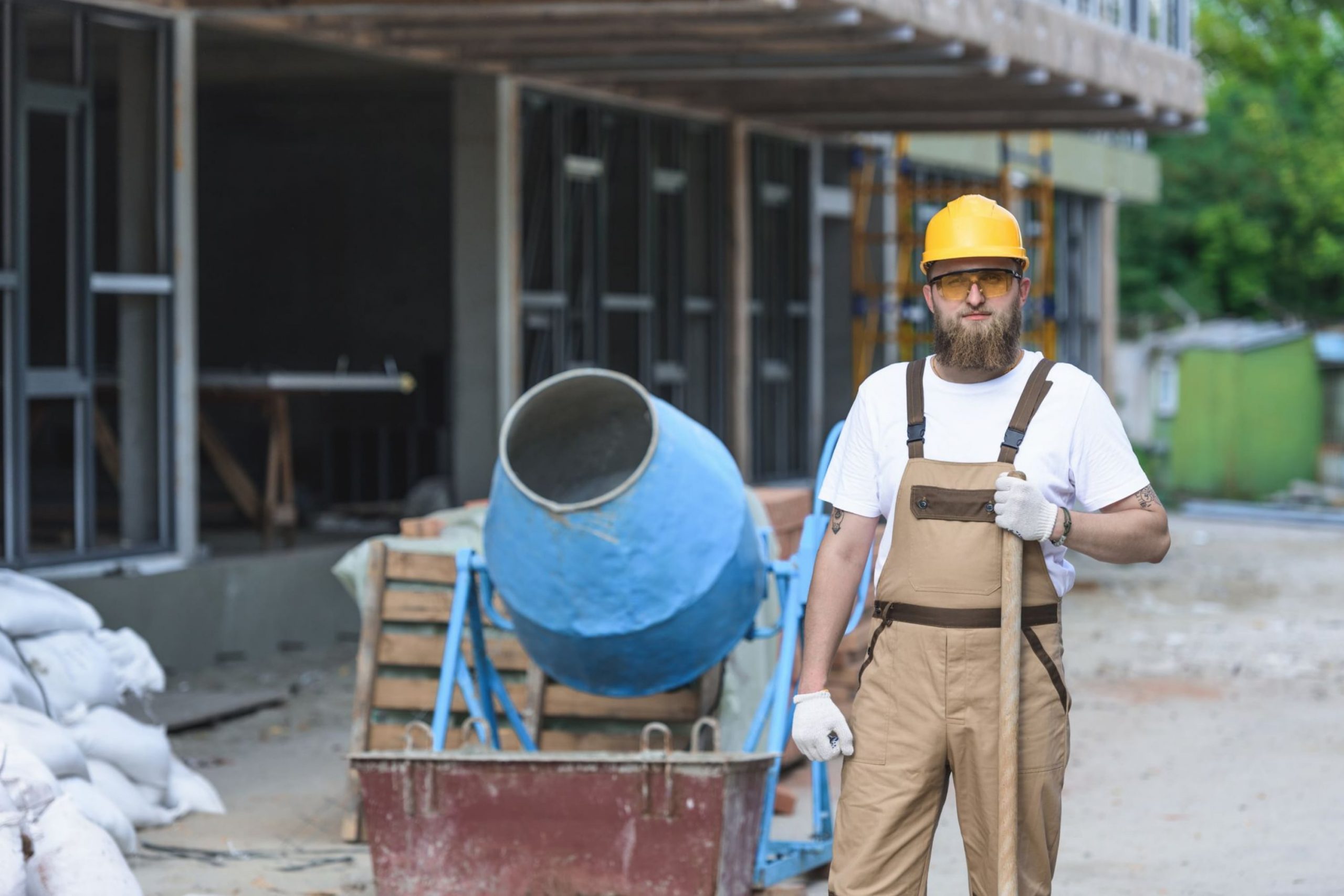
KostyaKlimenko via VistaCreate
Table of Contents
Identify the Problem
Like with any problem that you may face, the very first step is to identify the problem. Target the cause and you will know how to deal with it.
Find out where the water is coming from. For example, if you have gutters, downspouts, or drains that are not properly functioning, they could be the source of the standing water on the concrete slab.
Fix the Source of the Problem
Once you know where the water is coming from and what makes it accumulate on your concrete surface, you can take steps to fix the problem.
For example, if your gutters are clogged, they need to be cleaned out and also, you need to make sure they are properly draining.
If you have downspouts that are not draining properly, this also should be fixed. For instance, you could extend them or add drains to catch the water and redirect it away from your concrete.
Clean Up the Area From Concrete Puddling
Once you have targeted and fixed the source of the problem, it is time to clean up the area. To begin with, remove any standing water from the concrete.
You can use a wet/dry vacuum or a mop and bucket for this purpose. But if the puddle is big (or if there are any of them), it would be more reasonable to opt for a vacuum rather than cleaning by hand with a mop!

brebca via VistaCreate
Apply a Concrete Sealer
After the puddled area has been cleaned up, it is time to apply a concrete sealer. Applying the sealer will help prevent water from seeping into the concrete and causing problems in the future.

housekeepingbay.com
There are many sealers out there these days, so we recommend you choose carefully! Make sure that the product you are going to buy is specifically designed for concrete, and not for other materials!
Grinding Concrete
This step is not mandatory, so if your puddling problem is not huge, skip it. But if you have severe water ponding issues, you may need to grind the concrete in order to eliminate any dips or divots where water can potentially accumulate. For sure, some of you may consider this a more extreme measure, but it can effectively solve the problem.

wuttichok via VistaCreate
Replacing Concrete
In some cases, the only way to fix water pounding on concrete is to replace the concrete altogether.
However, we need to note that this option is usually only necessary in extreme cases, for example, where the concrete has been severely damaged and can’t be repaired.
Concrete Raising And Leveling
There is another option you can use for fixing water pounding on concrete. It is to have the concrete raised or leveled. This procedure is done by injecting a foam material under the concrete to lift it up. In general, this approach makes sense but even though this is a less expensive option than replacing the concrete, it may not be as effective in solving the problem.
Like that, now you have a complete guide on how to fix the standing water on your concrete. In the majority of cases, these recommendations will be more than enough for fixing the problem.
However, if you are having trouble fixing water accumulating on your concrete and you still have water puddles on your patio or driveway, it may be a reasonable decision to hire a professional.
A professional will be able to assess the problem and recommend the best course of action.
They may also be able to do the work for you, saving you time and money.

ArturVerkhovetskiy via VistaCreate
Why Should You Consider Fixing Water Puddling On Concrete?
If you suffer from standing water on your concrete patio or driveway, you should not just wait until it is gone by itself. This problem must be managed as soon as possible since water ponding on concrete can cause several problems, and we can name several of them.
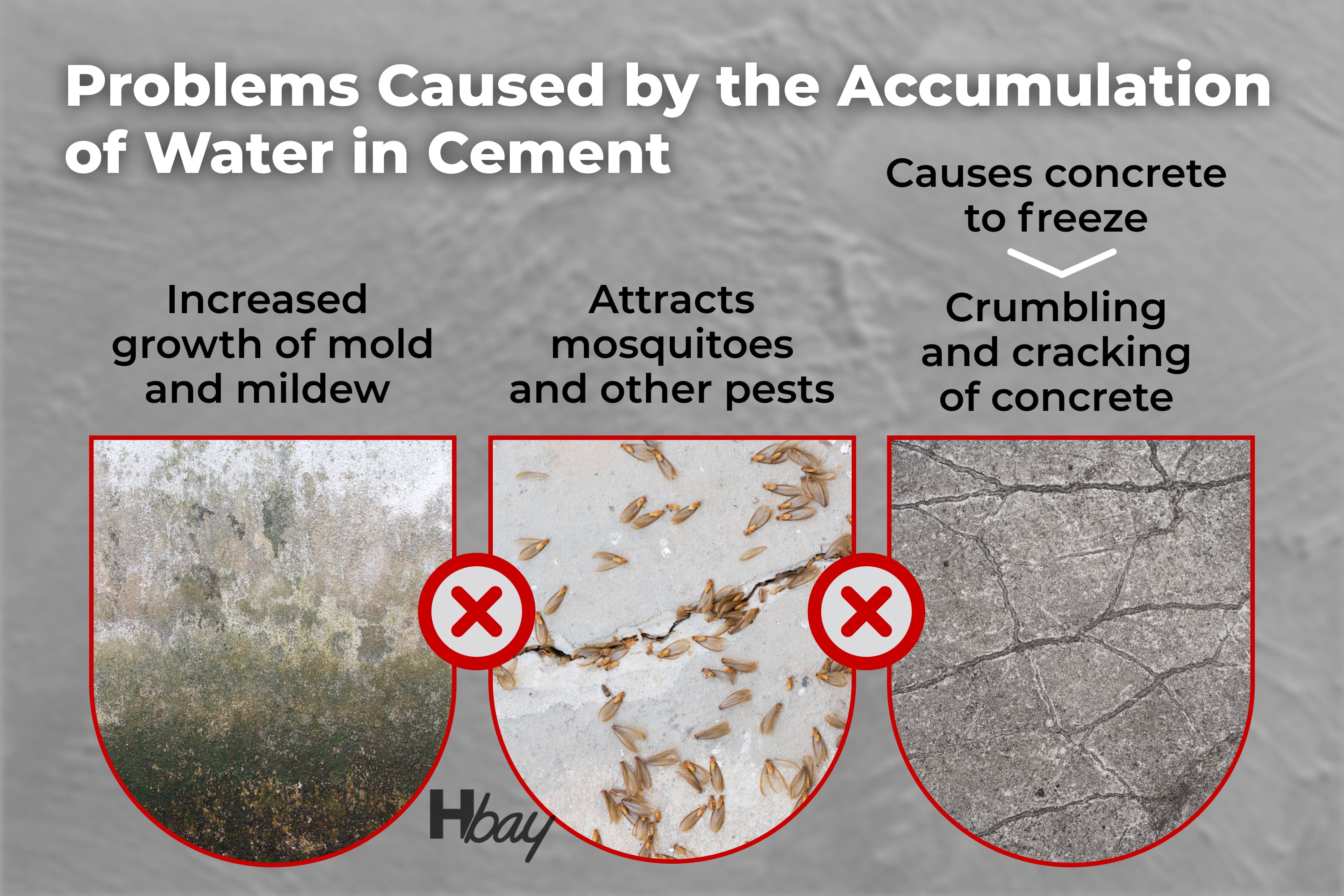
housekeepingbay.com
- First, it can lead to the growth of mold and mildew. As a result, the concrete will be damaged and get an unsightly appearance
- Additionally, ponding water can freeze in cold weather, leading to concrete cracks and crumbling of the material
- Finally, standing water is a breeding ground for mosquitoes and other pests!
Therefore, it is important to fix any water ponding problems as soon as possible. As you know now, There are several ways you can take to cope wiith ponding water, such as installing drains or slopes, but still, the most effective solution is often to repair cracks or holes in the concrete.
What Is Concrete Puddling?
Since we are talking about puddling water, let’s make it clear what concrete puddling is. Water ponding (also known as concrete puddling) is a condition where water stands on top of your concrete surface like a patio or driveway instead of being drained.
This can happen for various reasons. For example, water may not disappear because of the compacted soil, poor drainage, or even just heavy rain.
However, if left untreated, water puddles can damage your concfrete by causing cracks, mold growth, and other damage like fungal growth and mosquito breeding.
Other Things to Consider When You Deal With Puddling Concrete
When it comes to removing excess puddling water from your concrete surface, it is important to take all the possible factors and nuances into consideration. So even though you are now aware of the basic guidelines regarding this problem’s fixing, check out what else can help you cope with it faster and quicker.
- If you have a pond that is constantly overflowing, it is probably best to talk to a professional about how to fix the problem
- Ponds can be created by anything from melting snow to rainwater runoff. If your pond is artificial, it may be possible to make better drainage by creating an outlet or spillway!
- You can try to increase the capacity of your pond by adding more liners or excavating the sides
If you have a natural pond, you may be able to improve drainage by clearing debris and vegetation from the area around the pond - Leaking pipes or gutters can also cause water accumulation. If you suspect this is the case, you should have them professionally checked for leaks
- You may also want to consider installing a drainage system around your pond to help collect and redirect water
As you can see, these tips mostly refer to those homeowners who have a pond (either natural or artificial) on their property. So if you don’t have one, just make sureyour water pipes and gutters are functioning well. This will be enough for avoiding the puddles of water.
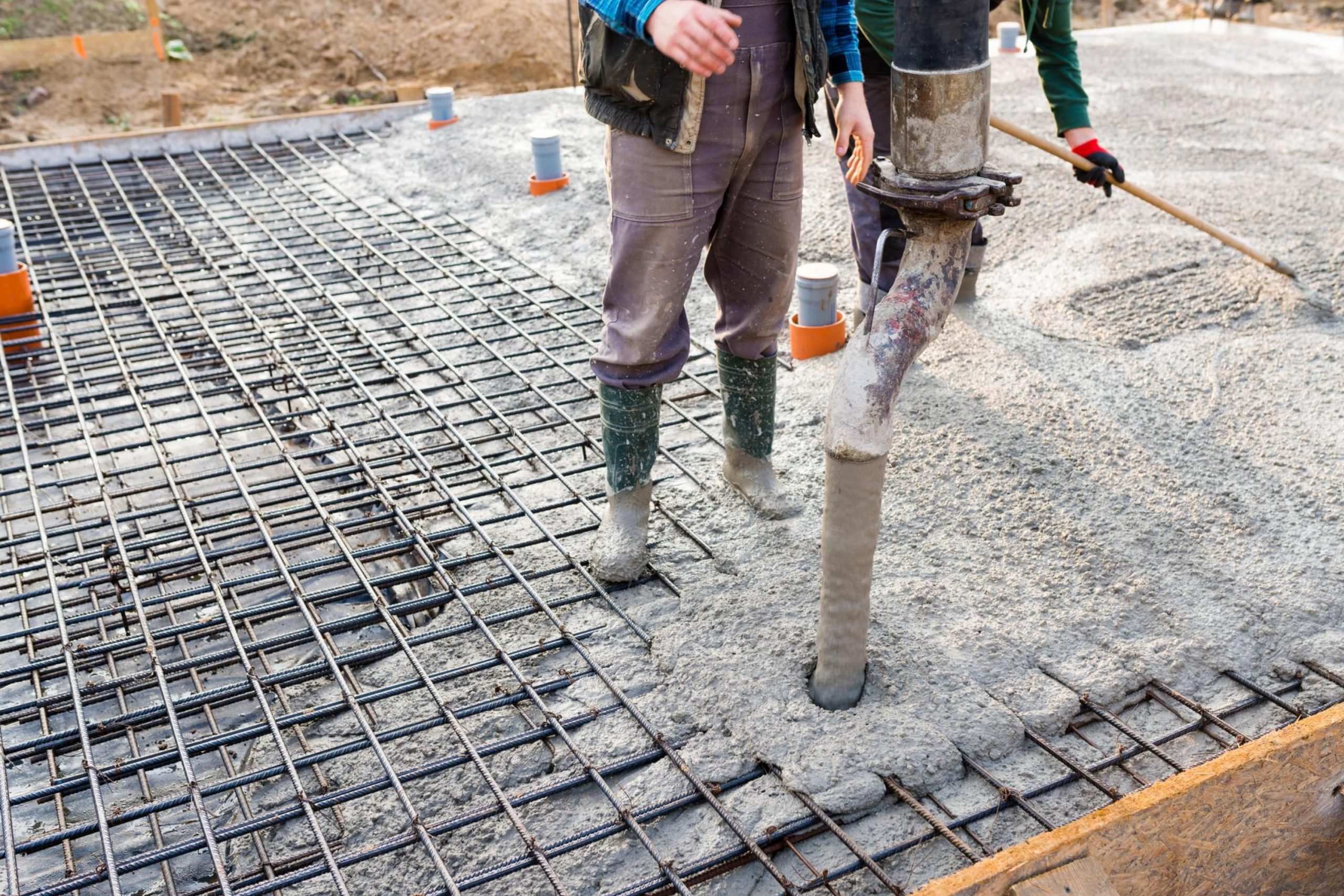
bubutu via VistaCreate
How Do I Stop Water Ponding on Concrete?
Most people have had the experience of water pooling on concrete and not figuring out how to stop it. Water ponding can be frustrating, whether from rain, melting snow, or a sprinkler system. Thankfully, there are a few steps you can take to fix the problem.
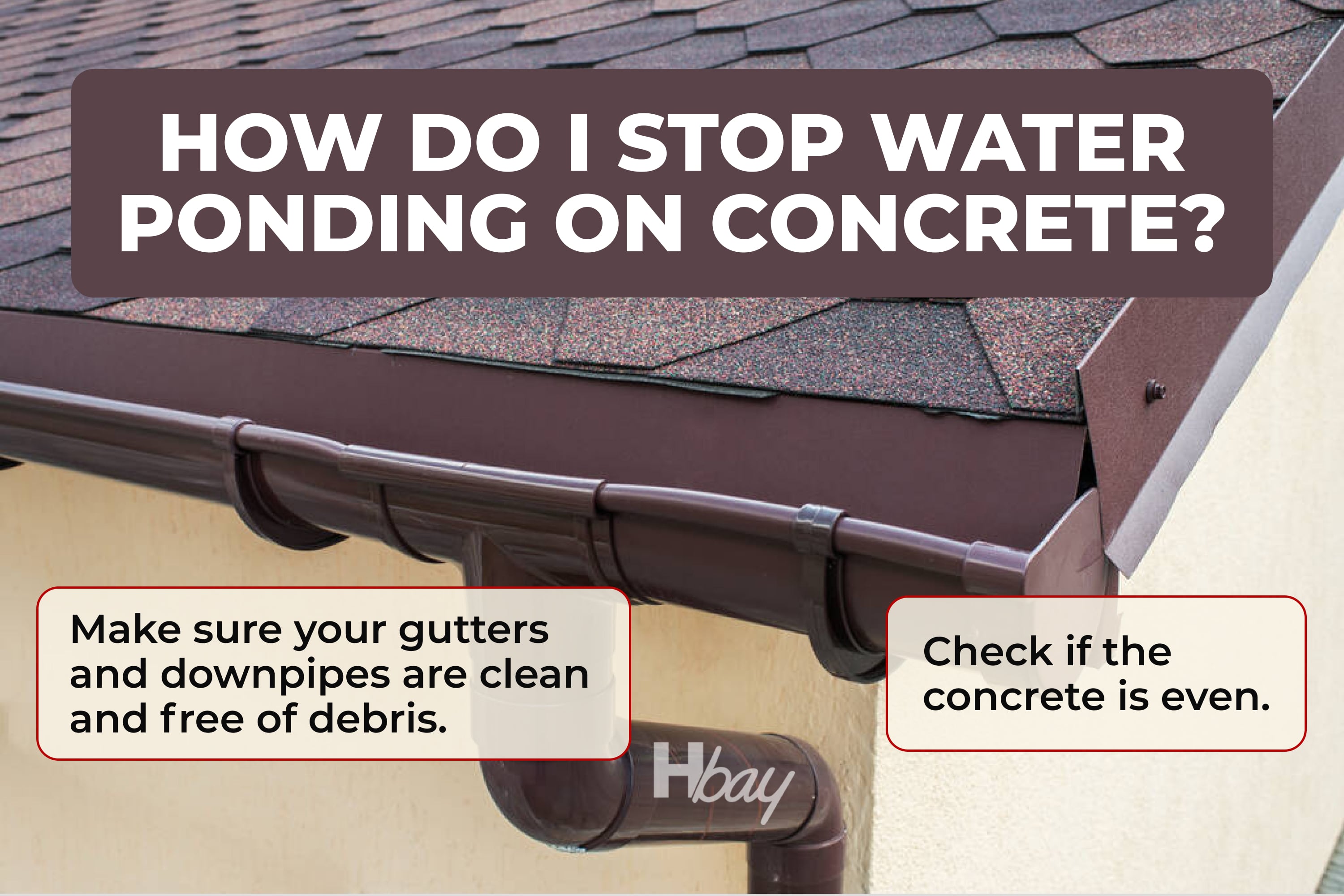
housekeepingbay.com
First, check to see if the concrete is level. If it’s not, water will naturally collect in low spots. Second, make sure that your gutters and downspouts are clean and debris-free. This will allow water to flow freely away from your foundation.
Finally, consider installing a drain or French drain around the perimeter of your concrete pad. This will provide an outlet for any water that does the pond, preventing it from causing damage to your concrete or home.
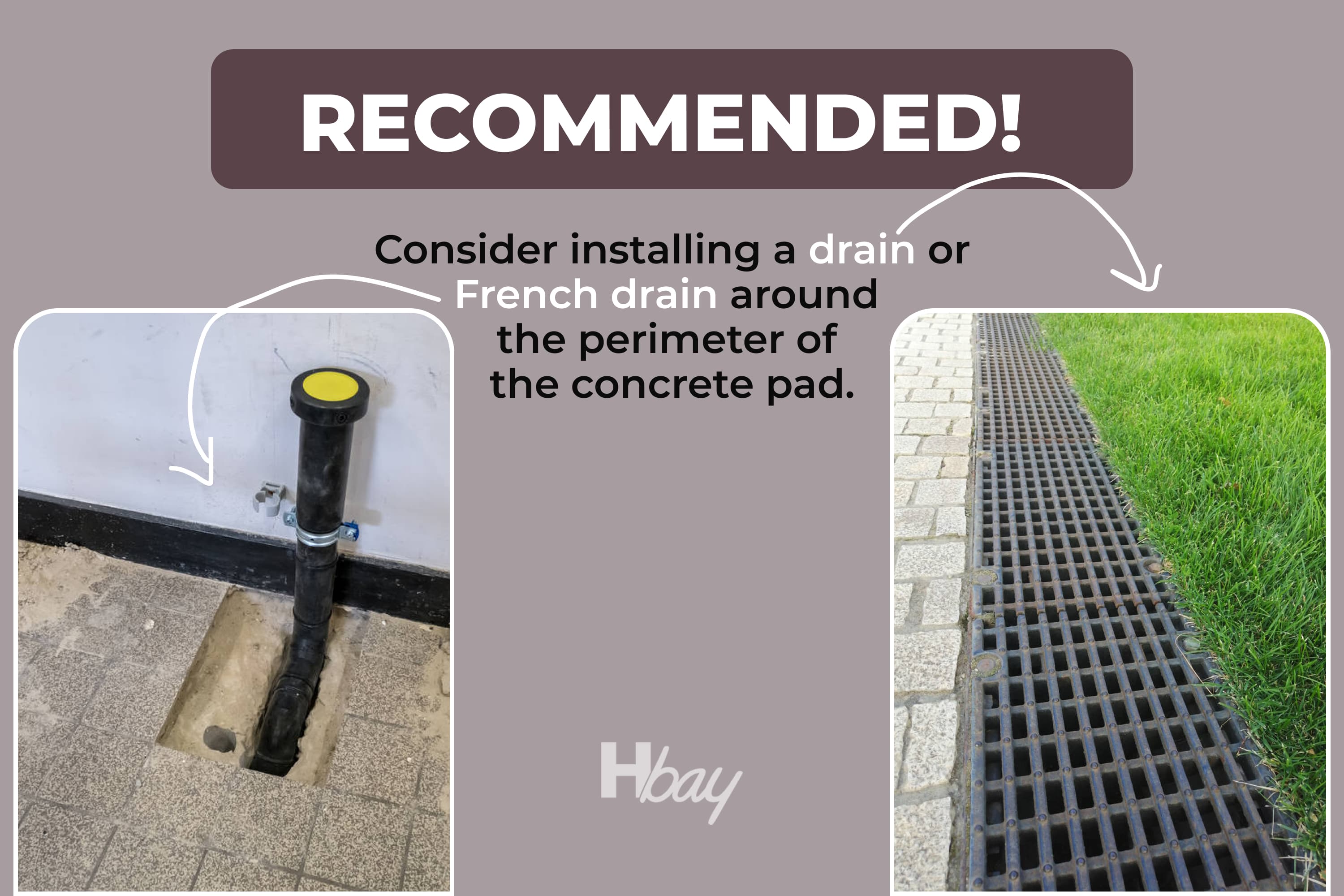
housekeepingbay.com
If you follow these steps, you should be able to stop water ponding on your concrete pad.

How Do You Fix a Low Spot on A Concrete Slab?
If you have a concrete slab that is starting to show signs of wear, it is important to take action immediately. One problem is a low spot forming in the middle of the slab.
While this may not seem like a big deal at first, it can eventually lead to cracks and further damage. So how do you fix a low spot on a concrete slab?
The best way is to use a process called mud jacking. Mudjacking involves pumping a slurry of concrete and other materials under the slab, which raises it back into place.
This is an effective way to repair existing damage, but it can also help prevent future problems from occurring. So if you have a concrete slab that is in need of repair, contact a mud jacking contractor today.
Now you know not only how to fix water puddles that tend to develop on your concete patio or driveway.
You are also aware of why it can happen and what can be done in order to prevent this from happening in the future. With all this in mind, and with all the handy tips e shared with you on this subject today, you will be able to keep any concrete surface in your home dry and puddle-free.
Ever wished paint sampling was as easy as sticking a sticker? Guess what? Now it is! Discover Samplize's unique Peel & Stick samples. Get started now and say goodbye to the old messy way!
Get paint samples




Frequently Asked Questions
⭐What happens if water stays on concrete?
If it stays on concrete for more than a few minutes, the water will start to seep into the concrete, leading to cracking. Additionally, standing water can attract insects and other pests, further damaging your concrete.
⭐Can water damage cement?
Unfortunately, it can. However, it’s important to remember that cement is a very durable material and, when properly cared for, it can last for many years without any problems.
⭐Is there a sealer for concrete?
Yes, there is. But since there are many different types of sealers available, be sure to choose one specifically designed for use on concrete.
16 thoughts on “How to Fix Water Ponding On Concrete?”
Leave a Reply

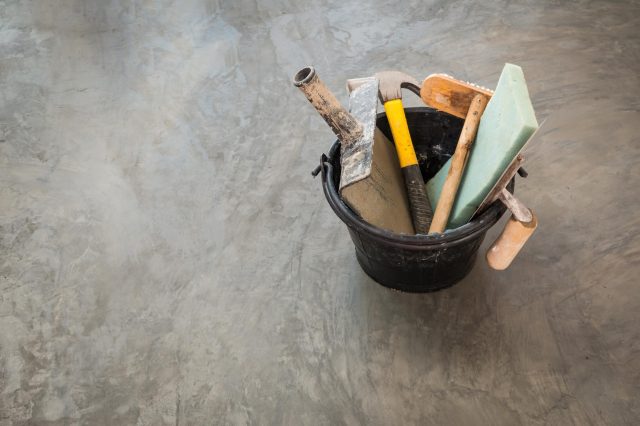
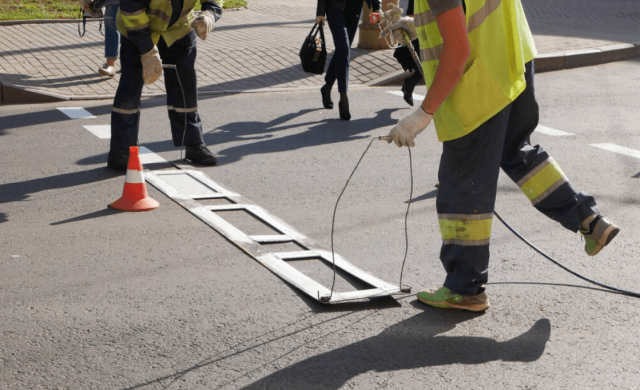
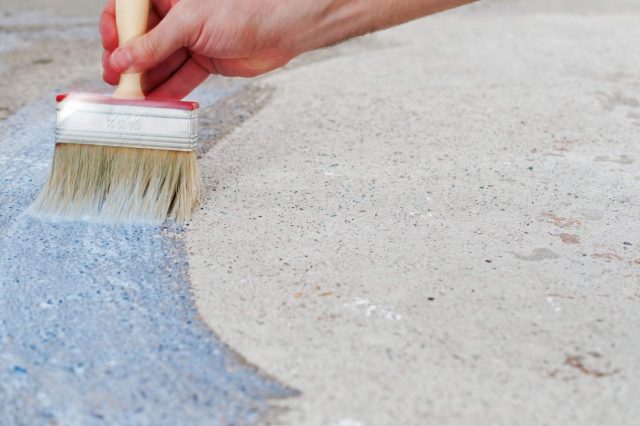


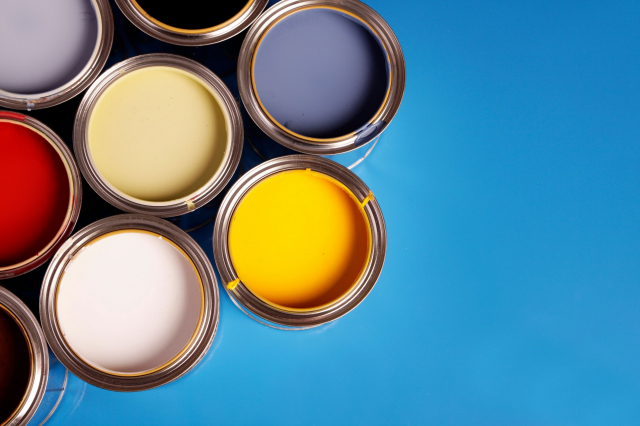

Why is there water sitting on top of my concrete driveway after it rains? The driveway seems to be even and well-leveled. I don’t get the point! Any ideas?
Are you sure that your driveway is indeed even? See, pooling water often occurs when your surface is not laid evenly and has a low spot that doesn’t drain. This leads to the impossibility of proper drainage. Also, it’s possible that the drainage that might be initially used before, now slopes toward the wrong direction.
Hello everyone! Look, I need your help folks. I need to divert water from my concrete driveway so that it doesn’t accumulate there. Does anyone know how to redirect water on concrete?
Hello! I had this kind of problem a couple of years ago. As far as I can remember, I was advised to install a French drain or swale. This is said to be the most effective way of redirecting runoff water from concrete. This drain will intercept the water that runs toward your driveway and channel it downhill.
Can you somehow fix sinking concrete? Maybe you could recommend a few handy and effective methods how this can be done?
Hey there. Well, as far as I know, you can fix concrete if it’s sinking. I guess this process is called mud jacking or somehow like that. But I know nothing about how exactly it’s performed, sorry!
How do you fix a dip in a concrete slab? The slab is pretty new so I guess that dip developed because of the contractor’s mistake. But how am I supposed to fix it?
Are you sure it’s you who has to fix it? If it was really the fault of your contractor and you can prove it, I guess it’s him who is supposed to fix the slab. But anyway, even if you will have to do this (I mean fixing), I guess you will need to pour extra concrete over the dip and wait until it cures. But I may be wrong dude, I’m not a professional contractor!
Well, yes, they can unless you don’t remove them. In general, I’d say that water is not the best friend for concrete since it can breakdown the materials the concrete is made of. If your concrete floor is constantly exposed to water, it may develop create mold and bacteria, which will lead to the concrete foundation to move and shift. As a result, you may end up with the cracks in the concrete.
What happens if water sits on concrete? See, there is an old pipe in my basement that’s almost constantly leaking. We will be replacing it soon, but for now we have a problem with the small puddles on the floor. I’m afraid they can damage the concrete. Can they?
I have recently poured a new concrete floor in my garage but now I can see that there are several low spots on its surface. How do you fix low spots on concrete? Any ideas?
If you need to level low spots on a concrete floor, I’d recommend you use a concrete patching compound. At least when I used it for fixing my concrete floor in my basement, it worked really well! By the way, this patching compound also works well to repair any cracks that formed when the concrete settled.
Hi! Need your help with one small issue, folks! See, we have standing water on our concrete patio. The pool is not very big but it’s pretty hard to get rid of. Besides, each time it rains or I wash the patio, there’s always a pool or two. And I noticed that in summer, we have way more osquitoes than before we got the patio! Could these bloodsuckers appear because of that standing water?
Hi! Yeah, I’m pretty sure that the water “pond” you have is the cause. Especially if you’re sure you didn’t have so many mosquitoes before. You need to fix that puddle as soon as possible, and insects will be gone, I’m pretty sure about that!
We are going to get a concrete patio soon but I’m a bit concerned about it. See, I know that concrete is quite a durable material, but still there must be things that can cause damage to it. What will ruin concrete? Does anyone know?
As far as I know (and judging from my own experience), water ponding is one of the most common causes of concrete damage. When water sits on top of the concrete, it will eventually soak through and cause the concrete to crack and crumble. Unfortunately, this can also lead to harmful mold and mildew growth. Maybe, there are other cause as well, but I know only this one.